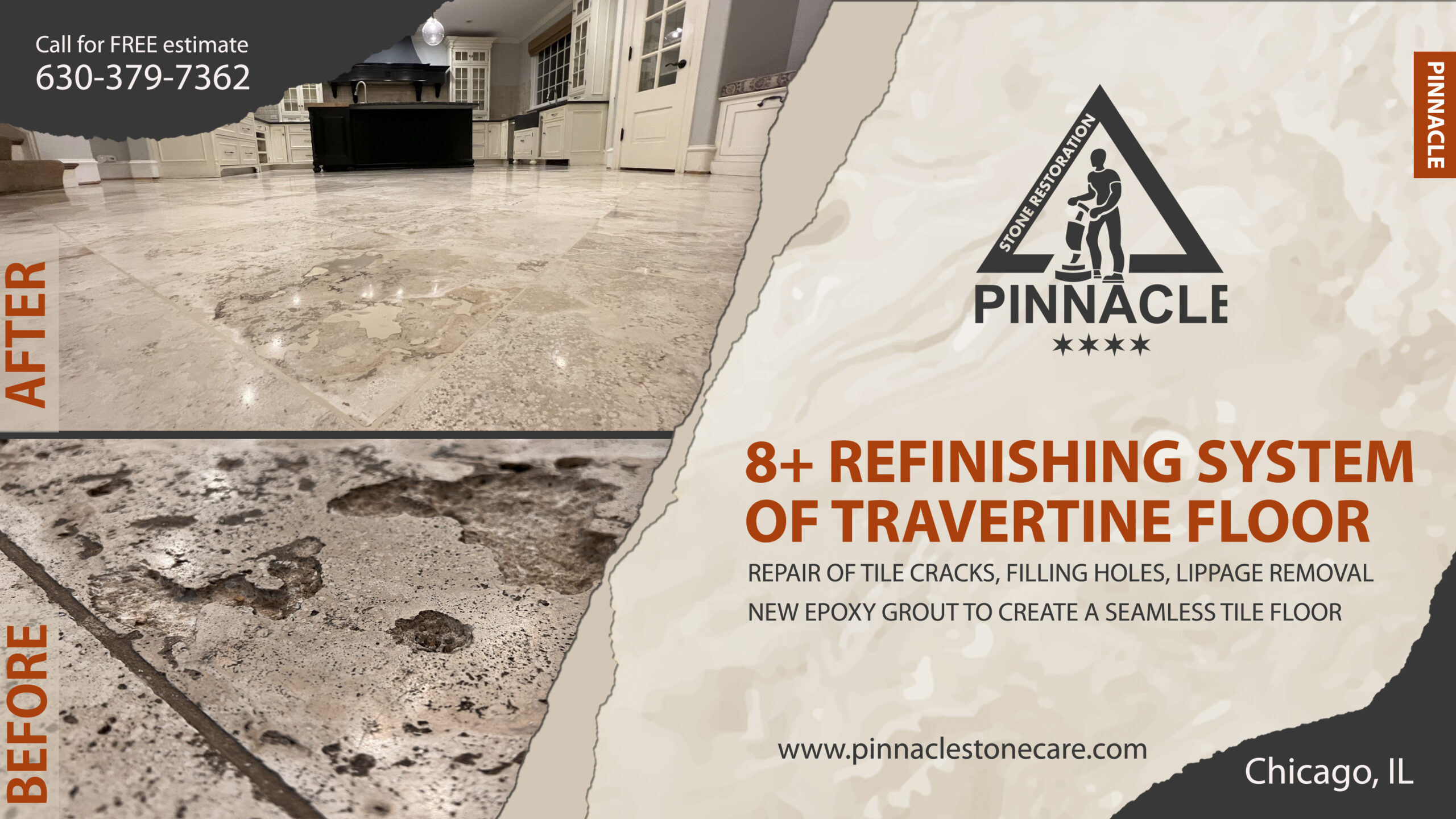Why does travertine have holes in it?
Travertine is a type of limestone. We know travertine is formed by evaporation of river and hot spring waters, so the holes normally occur where water naturally runs through the stone and leaves bubbles inside.
When choosing travertine, note that the size of the holes shows whether the stone is a premium, commercial or select cut. Usually, the smaller the hole, the more premium the cut of travertine it is.

Why filling holes is better and healthier for your home
Travertine floor tiles may come in both filled and unfilled versions. People usually choose the unfilled travertine for a more natural look, but it’s not always a practical choice. Tumbled travertine is a very popular flooring choice in many residential homes. In our experience, most of our customers choose to fill the holes in their travertine tile floors (if they come unfilled).
Every time we restore travertine or grind deeply to remove tile lippage, we expose naturally occurring holes and we always fill them up.
Exposed holes in travertine sometimes may lead to cracks, but if you fill them up with travertine filler/epoxy resin/grout they will hold up much better.
We like the fact that natural stone is a gift for those who suffer from certain allergies. Although if you leave large holes unfilled, dust, mold growth, dirt may accumulate in those holes and make it quite a bit unhealthy.
You may find filling holes as disadvantage if you care for that natural more rustic look with holes. However, by filling holes you gain, healthier environment, better longevity, high durability, and easier maintenance.
Filling travertine with a color matched resin is a perfect solution for large holes.
Remember to avoid any acidic substances (if spilled) or acidic cleaning solutions (only pH-neutral); do regular sealing of your travertine floors.

You will enjoy your travertine floors for quite a long time, if any questions or concerns might arise, please feel free to contact us or ask for a free estimate.







